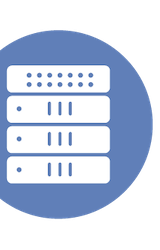Dell and servers have been on Stephen Foskett’s mind after visiting Dell’s Austin headquarters with Tech Field Day 16 and Dell EMC in Hopkinton for Storage Field Day 16. The newest generation of Dell servers have just about every feature you could ask for, but after testing out a PowerEdge R7415, Stephen says what really differentiates them from the competition is the management platform. Dell EMC’s Quick Sync 2 technology as the integrated iDRAC management platform is a huge upgrade from previous versions and easily beats out the competition.
Accessing Security Insights with SolarWinds Network Insight For Cisco ASA
Tom Hollingsworth takes a look at SolarWinds Network Insight For Cisco ASA, which he saw at length at Tech Field Day earlier this year. He looks at how this enables admins to analyze complicated access lists and determine exactly what they are doing, without a bunch of manual configuration.
HCI Isn’t the Only Simplified Management
In this piece, Alastair Cooke looks at why Hyperconverged Infrastructure doesn’t deliver the comprehensive simplified management it often is associated with. He then looks at how since HCI first hit the market, simplification is now offered for a variety of modern products that may better service IT operations.
The case for Cloud Access Security Brokers in small business
Sonia Cuff takes a look at the Cloud Access Security Broker offered by Forcepoint, which she heard of at Tech Field Day earlier this year. This serves as a buffer between users and SaaS applications, allowing IT teams to exert some control and enforce security policies.
SolarWinds, Not Just On-premises, There Is SaaS Too
Alastair Cooke looks at how SolarWinds is offering an increasingly compelling SaaS monitoring portfolio, which he saw at two past Tech Field Day presentations. In this post, he runs down their Pingdom, Loggly, Papertrail, and AppOptics offerings.
Redfish support for DellEMC PowerEdge
Andrea Mauro got to hear from Dell EMC’s automation and configuration team at Tech Field Day earlier this year. They outlined their new iDRAC9 version, but also support for iDRAC9 version on the newest generation of PowerEdge servers. Andrea thinks for organizations in a heterogenous vendor environment this support is vital for implementing automation.
What is Redfish?
Andrea Mauro wrote up on explainer of Redfish, the open industry standard specification, API and schema that specifies RESTful interface and utilizes JSON and Data. He highlights why it’s designed to supplant the Intelligent Platform Management Interface due to its extensive support of scripting languages and RESTful APIs. He sees it as mature enough to replace IPMI or proprietary solutions like Dell’s iDRAC.
IT Security Is a People Problem
Forcepoint had a rather unique presentation at Tech Field Day in February. The company focused on the failing of traditional security, and how they have solutions to address the largely ignored risk of security breaches inside an organization. Alastair Cooke wrote up his thoughts on their User and Entity Behaviour Analytics. Provided an organization discloses that these kind of analytics are being done, Alastair found it an interesting addition to an organization’s security toolset.
Get Excited About Traceroute!
John Welsh saw SolarWinds’ Traceroute NG tool at Tech Field Day last month, and decided to give it a spin. It takes the fairly humdrum traceroute tool, and provides additional speed and features to help be an ad hoc network troubleshooting tool. John sees it as a useful tool in its own right, but also a gateway for potential customers to use SolarWinds’ Cloud Monitoring.
Stop User Behavior from killing your data
Forcepoint was a first time presenter at Tech Field Day last month in Austin. In this post, Luigi Danakos takes a look at their User Behavior Analytics. Forcepoint’s approach to security is not to focus on outside threats that firewalls and policy can help stop, but rather to identify potential insider threats based on looking at behavior. This often falls outside simple rules of good vs bad behavior, requiring algorithms and statistical models to categorize the messy middle of most user actions.
Security by Behavior
It was great to have Forcepoint make their first Tech Field Day presentation last month at our event out in Austin. John Welsh was there, and wrote up his thoughts on their approach to security. This is based around their User and Entity Behavior Analytics, which isn’t designed to prevent outside actors from accessing your system, but instead to identify the far murkier problem of user behavior. Their platform provides a way to categorize that behavior to better identify potential insider threats.
Serverless computing highlights new security challenges in hybrid IT
Hybrid IT and cloud native services, like AWS Lamba, require a different approach than traditional IT security. A simple lift and shift approach to security will quickly reveal deficiencies of policy once compute and storage moves beyond your four walls. In this piece, Keith Townsend was able to talk to Forcepoint Security as part of Tech Field Day last month. Keith thinks the company has made the acquisitions needed to eventually provide the firewall and cloud access security broker granularity needed for hybrid IT.
What’s really define an HCI solution?
At Tech Field Day last month, NetApp’s Adam Carter presented how the company conceptually approached the idea of Hyperconverged Instrastructure. Andrea Mauro wrote up his thoughts on the presentation. For him, its less important whether NetApp’s solution fits into the HCI buzzword, but rather what is the actual value of the solution.
Cloud Field Day 3 Preview: NetApp
Chris Evans is hearing out to Silicon Valley next month to take part in Cloud Field Day. In this piece, he previews what to expect from NetApp. He’s looking forward to hearing more about the company’s transition from a storage company to data management. This is based around Data Fabric, which Chris calls “an under-told stor[y]”.
The True Meaning of HyperConverged
The definitions of words can sometimes be tricky in the enterprise. For Alastair Cooke, the problem comes when we force a term to conform to an arbitrary set of mechanical elements, rather than around business need. This was brought to mind during Tech Field Day, when NetApp presented about their philosophy behind HCI, which is far more about the simplicity of operating an environment designed purely to run VMs, than simply adding storage to a server box.
The Yin Yang of Dell EMC Storage
Jon Hildebrand takes a look at what he heard from Dell EMC’s storage team at Tech Field Day last month. Overall he saw the company’s XtremIO team taking a page out of the VMAX playbook, emphasizing calm growth with their XtremIO 2 platform, learning lessons from the initial growing pains of the platform. Jon sees this as a way to move the platform into the self-described “boring reliability” of VMAX.
Tech Field Day 16: Comparing Three HCI Architectures
Troy Mangum at NetApp reviews the company’s HCI presentation from Tech Field Day last month. The presentation featured NetApp’s chief HCI architect Adam Carter comparing different HCI architecture models, but importantly noting that despite architectural difference, the goal of any of them is to deliver the same business outcomes. Adam reviews why NetApp made the choices it did with HCI. Overall the presentation generated fascinating discussion between the NetApp team and the delegates around the table.
Managing Servers in a Serverless World
In this piece, Gabe Maentz uses the popularity of serverless models to introduce Dell EMC’s OpenManage, which he saw at Tech Field Day last month. Serverless essentially lets you focus on functions and not worry about the underlying servers. As a high volume seller of servers, Dell EMC is using OpenManage Essentials and Enterprise to simplify, automate and unify their server life cycle management functions. Gabe found the solution impressive, with a focus on practicality and ease of use for admins.
Security has Failed, Analytics to the Rescue
Gabe Maentz was impressed at Forcepoint’s admission that traditional security has failed. At Tech Field Day last month, the company presented why drawing the line between good and bad behavior with legacy static tools isn’t adequate. Instead, they opt for a “human-centric” approach to security. Using their User and Entity Behavior Analytics, the company is able to provide dynamic intelligence into both system context and user behavior to allow organizations to see risks and threats in real-time.
HCI/Not HCI – It doesn’t matter
For Keith Townsend, it doesn’t matter much if a solution is called HCI or CI. “At the end of the day, the label doesn’t matter. You can call a hotdog a sausage or a sandwich (Just as long as you don’t put ketchup on it).” In general, HCI’s promised simplifiation of IT operations works great for smaller teams, but breaks at scale. This becomes another management stack that adds to, not reduces, complexity. NetApp has an interesting approach by allowing IT to use existing SolidFire management tools on their HCI platform, thereby not introducing yet another management stack.







